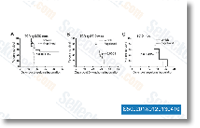After the treatment method, the quantity of cytoplasmic CCHCR1 granules increases remarkably but in addition the centrosomal localization continues to be observable, suggesting a partial dependency of the CCHCR1 localization on microtubules. The overexpression of various CCHCR1 isoforms will not have important effects about the microtubulus network however the disruption of your network with nocodazole, yet, impacted the attachment and form in the Iso3Risk cells by producing them clump with each other. We studied the effects of CCHCR1 expression on actin and vimentin intermediate filaments by immunofluorescence microscopy. The actin cytoskeleton of isoform one overexpressing cells is very similar to vector control or wild form HEK293 cells. Yet, phalloidine staining suggests altered actin cytoskeleton of isoform 3 cells, which exhibit lengthy filopodial projections with actin wealthy hints.
Quite possibly the most apparent abnormality is observed after disruption on the microtubulus network with nocodazole. right after the treatment method, actin is additionally detectable as punctate staining during the cytoplasm. The actin wealthy spheres resemble podosomal or invadopodial structures, that are actin rich protrusions of your cell membrane. Dependant on immunofluorescent staining the CCHCR1 overexpressing cell lines vary selleck inhibitor slightly also in vimentin organization and expression but immunoblotting shows only small distinctions inside the protein expression level in between diverse CCHCR1 cell lines. Disruption of your cytoskeleton with nocodazole, however, lacks equivalent alterations in vimentin organization as in actin. Our prior microarray final results with transgenic mice propose that CCHCR1 could possibly regulate the expression of cytokeratins. Immunofluorescent staining of steady CCHCR1 cell lines using a pan cytokeratin antibody reveals decreased expression in Iso3Risk cells.
Similar downregulation of cytokeratin expression in Iso3Risk line is observable by immunoblotting. Western blotting reveals also read review that the silencing of CCHCR1 in HEK293 cells benefits in an all round reduction of cytokeratin expression. Keratin 17 is implicated inside the psoriasis pathogenesis and its expression is altered in experiments with transgenic mice overexpressing CCHCR1.  Immunofluorescent staining of KRT17 in stably transfected CCHCR1 cells reveals increased expression in Iso1Non danger cells, whereas the labeling in Iso1Risk cells resembles the manage cell line. In Iso3Non danger and Danger cells only a handful of cells are favourable for KRT17. The immunofluorescent results agree properly together with the qPCR and western blotting information showing a significant induction of KRT17 expression within the Iso1Non risk cells. Additionally, as proven by immunoblotting and qPCR, the silencing of CCHCR1 downregulates KRT17 expression in HEK293 cells. CCHCR1 regulates EGF induced STAT3 phosphorylation We now have not too long ago shown that EGF stimulates CCHCR1 expression in HaCaT keratinocytes.
Immunofluorescent staining of KRT17 in stably transfected CCHCR1 cells reveals increased expression in Iso1Non danger cells, whereas the labeling in Iso1Risk cells resembles the manage cell line. In Iso3Non danger and Danger cells only a handful of cells are favourable for KRT17. The immunofluorescent results agree properly together with the qPCR and western blotting information showing a significant induction of KRT17 expression within the Iso1Non risk cells. Additionally, as proven by immunoblotting and qPCR, the silencing of CCHCR1 downregulates KRT17 expression in HEK293 cells. CCHCR1 regulates EGF induced STAT3 phosphorylation We now have not too long ago shown that EGF stimulates CCHCR1 expression in HaCaT keratinocytes.
Sodium Channel Signal
Sodium channels are highly selective for the transport of ions across cell membranes.
